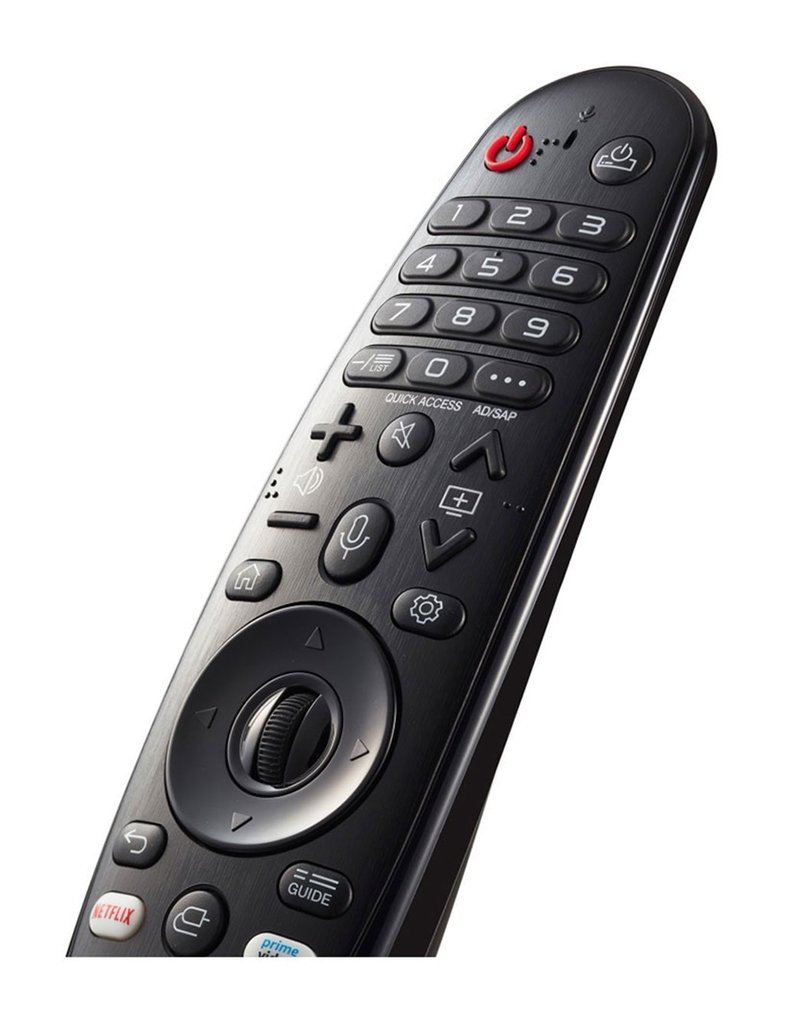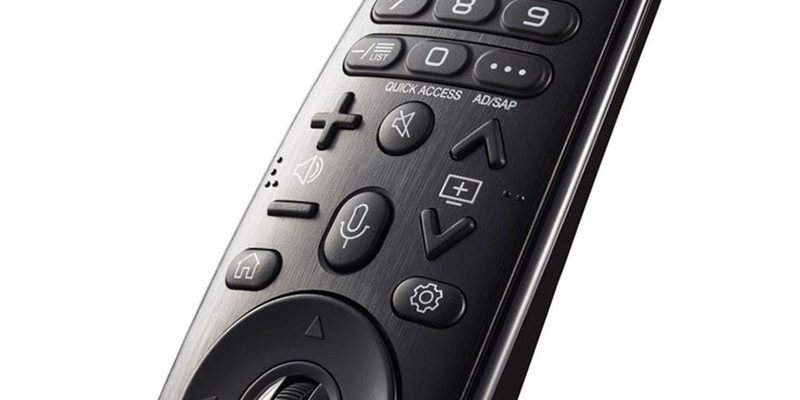
Here’s the thing: LG TV remotes look pretty simple, but they’re sneakier than they seem. Some come packed with magic (no really, the “Magic Remote” is a thing), special codes, and even the ability to talk to other gadgets in your setup. Maybe you’re eyeing your remote right now, wondering if it’s powerful enough to tame your wild collection of streaming devices. Let’s peel back the curtain and see what’s really possible, step by step, no tech degree required.
How LG TV Remotes Communicate With Other Devices
So, first off, not all remotes are created equal. LG’s main players—like the standard remote and the Magic Remote—both control your TV, but the Magic Remote can do a few extra tricks. What kind of tricks? We’re talking about communicating with devices like soundbars, Blu-ray players, and—if you’re lucky—those little streaming sticks or boxes.
Most LG remotes use infrared (IR) signals, and some newer models can also use Bluetooth. Streaming devices, on the other hand, are either IR or wireless (Bluetooth/Wi-Fi). If your streaming stick expects you to point and click with IR, there’s a chance your TV remote can get in on the action by sending the right code or signal. If the streaming device is all about wireless pairing, things get trickier.
For example, LG’s Magic Remote tries to make friends with other devices using a feature called “Universal Control.” When this works, you can set up your LG remote to send the right signal to your streaming device, kind of like giving your dog both a bark and a meow command, just in case. But, compatibility totally depends on the exact model of both the TV and the streaming device.
What Is Universal Control on LG TVs?
If you’ve got an LG Magic Remote, you might have spotted a “Universal Control” or “Device Control” option in the settings. This feature is essentially the Swiss Army knife of remotes—it tries to sync up and control other devices plugged into your TV’s HDMI ports. The goal? One remote to rule them all. But it does have its quirks.
Let me explain with a real-life example. Last year, my cousin bought a flashy LG OLED and couldn’t wait to ditch her Roku remote. We sat down together, hunted through settings, and tried “Universal Control” setup. Most of the time, this process goes like this:
- You open Settings, find Device Connection, and pick Universal Control.
- Follow the on-screen steps to select the device type (like “streaming box”).
- The TV sends a few test signals to your streaming device, and you see if the remote is working for basic functions (navigation, OK, maybe power).
Did it work? For controlling her Roku’s menu and basic playback, yes. For advanced stuff (like voice search or private listening), no dice. Universal Control’s main magic is in the basics—don’t expect it to unlock special features unique to your streaming remote.
Honestly, Universal Control makes life easier, but it’s like using a Swiss Army knife as a screwdriver. It’ll work if you aren’t picky, but for specialized stuff, you want the dedicated tool.
HDMI-CEC: The Secret Sauce for Compatibility
You might be wondering, “What if my remote still won’t play nice with my streaming stick?” Let me introduce you to something called HDMI-CEC (Consumer Electronics Control). This is basically a hidden code in HDMI cables that lets devices shout commands at each other, like “Hey you, turn on!” or “Pause that video!” If your TV and streaming device both support HDMI-CEC—and it’s enabled—you can use your LG TV remote for basic control, like power and volume.
Why is this a big deal? Imagine plugging your Amazon Fire Stick into your LG TV. If both devices have HDMI-CEC turned on, your LG remote should be able to handle basic navigation. Same goes for Apple TV, Roku, and Chromecast with Google TV. HDMI-CEC isn’t perfect; sometimes devices ignore each other or get out of sync, and sometimes the command lag is real. Still, for most casual users, this feature covers the basics.
The catch? HDMI-CEC is almost never called “HDMI-CEC” in menus. LG calls it “SimpLink.” Roku calls it “1-Touch Play.” It’s confusing, but a quick Google of your device + “HDMI-CEC” can help you translate. You’ll need to enable it in your TV’s settings (usually under Connection > Device Connection Settings > SimpLink).
Pairing, Resetting, and Troubleshooting Your LG Remote
Okay, so your LG TV remote isn’t working with your streaming device—now what? Here’s where a little hands-on troubleshooting saves the day. First, make sure your batteries aren’t dead. It sounds obvious, but dead batteries caused me hours of headache once (and made me question my entire life’s choices).
If your remote still refuses to play nice, it’s time for a reset or to try the pairing process again. With the Magic Remote, you can sometimes reset by holding down the Home and Back buttons at the same time for about five seconds, then re-pair by pointing at your TV and pressing the Wheel (OK) button. That resets the remote’s connection to your TV, which is where Universal Control lives.
If you’re using Universal Control but it isn’t responding to your streaming device, double-check that you’ve selected the correct input and device type in the setup. Sometimes, a simple unplug-and-replug of your streaming device (a classic “turn it off and on again”) will force the handshake over HDMI-CEC and get things back in sync.
Quick tip: Sometimes the software on your TV or streaming device is just out of date. A quick firmware update—on both—can magically fix all sorts of weird bugs. Try it, even if you don’t feel like a “tech person.”
Not All Streaming Devices Are Equally Compatible
Here’s where things get real: not every streaming box or stick can be tamed by your LG TV remote. Devices that use infrared (like some Roku models or older Apple TVs) are usually easier for Universal Control to sync with. Devices that are strictly Bluetooth or rely on fancy wireless remotes (like the basic Amazon Fire TV Stick or Chromecast) can be a lot harder, or just straight-up impossible, for your LG remote to handle.
Sometimes, even if you get partial control—like volume or power—certain functions won’t be available. For example, you might be able to scroll Netflix but not launch Alexa on your Fire Stick. That’s just the trade-off.
- Roku: Most models work for basic navigation via IR or HDMI-CEC.
- Apple TV: HDMI-CEC usually covers power and volume, but not Siri search.
- Fire TV: Basic navigation sometimes works, but advanced features usually don’t.
- Chromecast with Google TV: HDMI-CEC can help, but voice commands and assistant features stay with the original remote.
If you’re after advanced controls (voice commands, quick app launch, headphone pairing), it’s best to keep the original remote nearby.
Universal Remotes vs. LG Magic Remote: What’s Better?
So, you might be thinking about ditching all your remotes for a true universal remote. Good call in some cases! Universal remotes (like those from Logitech Harmony, for example) are designed to control a ton of devices with complex codes and customizations—even the fussy ones.
The difference? Universal remotes give you much more granular control, sometimes letting you set up custom macros (like “movie mode” that dims lights, turns on your TV, and fires up your streaming box all at once). LG’s Magic Remote is fantastic for navigating your LG TV and controlling a handful of basics on other devices. It’s great for everyday use, but it isn’t as powerful or flexible as a dedicated universal remote, especially if your setup is complicated.
If you have a tiny apartment or a simple setup, LG’s Magic Remote might be all you need. If you’re running a home theater system with six remotes and want to feel like an air traffic controller, universal is the way to go.
Real-World Tips for Making the Most of Your LG TV Remote
Here are some practical tips I’ve picked up from helping friends and family streamline their TV setups:
- Start by enabling HDMI-CEC (“SimpLink” on LG TVs) in your TV’s settings. It’s the easiest way to get remote control over basic functions.
- Try Universal Control setup if you have a Magic Remote and want to go a step further. Just don’t expect it to do everything.
- Keep original streaming device remotes within reach for advanced features—especially voice commands or quick-access buttons.
- If your LG TV remote stops working or acts weird, swap out the batteries, try a reset, or update your TV’s software. It honestly solves more issues than you’d think.
- If all else fails, consider a universal remote. It can be a lifesaver, especially if your devices just won’t sync up right.
Final Thoughts: Can LG TV Remotes Control Streaming Devices?
Wrapping this up, life with only one remote does sound pretty dreamy—and for many setups, your LG TV remote can at least handle the basics with streaming devices. Thanks to tricks like Universal Control and HDMI-CEC, you might never have to dig between the couch cushions for another lost remote (unless you need that special voice button). Remember, every device combo is a little different, so your mileage may vary.
But even if the dream of total remote control doesn’t quite pan out, you’ll at least understand the why behind what works—and maybe have fewer popcorn disasters along the way. If you’re willing to experiment and tweak a few settings, your living room can get a lot less cluttered and a lot more fun.
